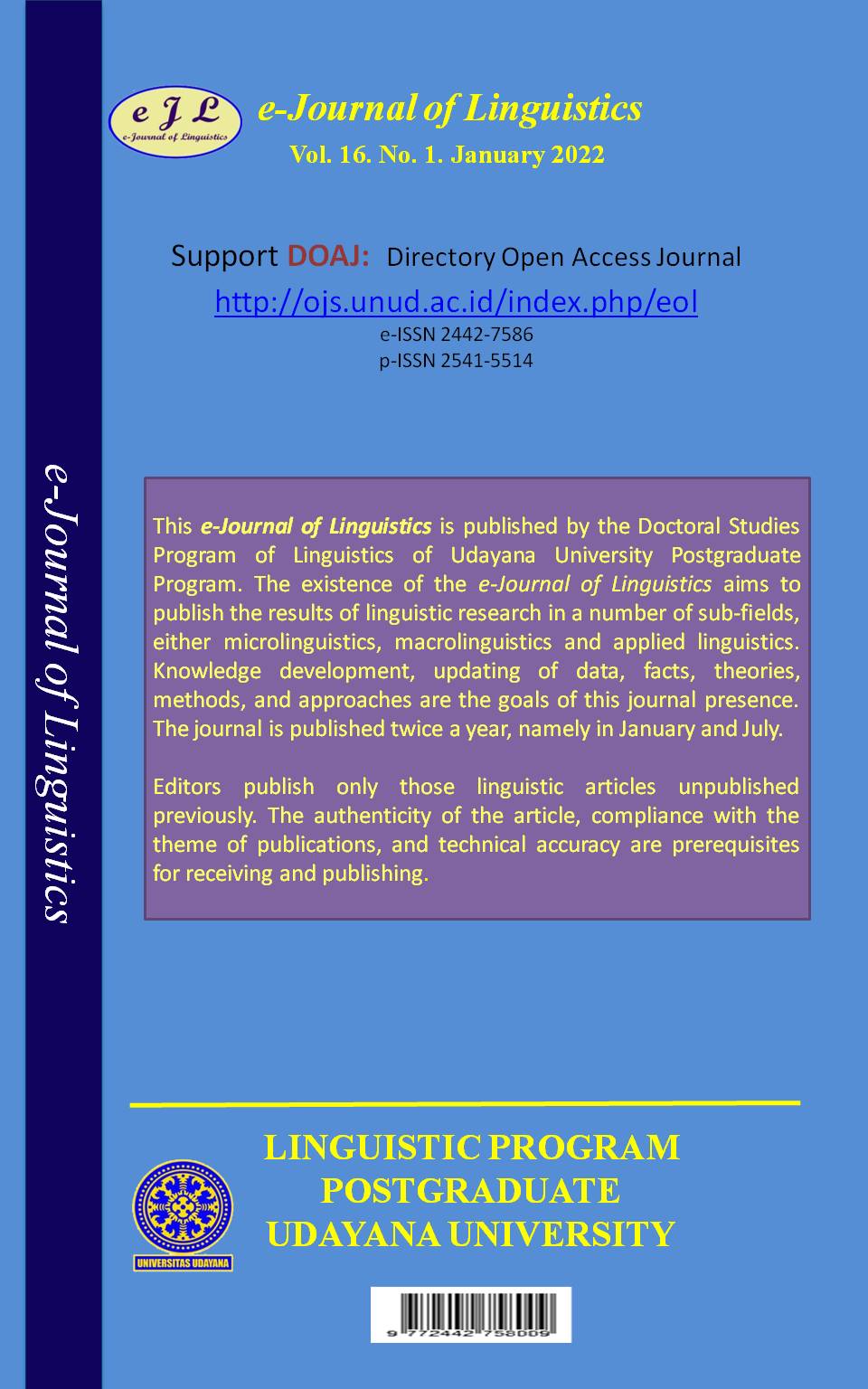Representation of the Use of Sumbawa Language During the Covid 19 Pandemic
Abstract
This article discussed Representation of the Use of Sumbawa Language During the Covid 19 Pandemic. The purpose of this study is to describe of the sentences mening by using Sumbawa language, which it applied to give socialization about the corona virus 19 toward the Sumbawa societies. The location of this study was conducted in Sumbawa district, West Nusa Tenggara Province, Indonesia. Futhermore, the method of this study used the qualitative descriptive method. Then, the instruments used for collecting data implemented the documentation and photographic techniques. The result of this study classified into two points, the first the meaning of senteces related to the interpretation of Fairclough, found several sentences in the Sumbawa regional language, namely Patis Pang Bale Turit Pemerintah advice which means that stay at home following government advice. According to the government's advice, Tama Ko IGD means entering the Emergency Care Unit (IGD) at the hospital, and Tama Ko IGD means entering the Emergency Room (ER) at the hospital, and Fotomu Nempel Pang Buku Yasin means your photo is stuck in Yasin's book. The second the meaning of the use of the Sumbawa language related to Pearce which classifies it into three categories, namely icon, index and symbol. The iconic element in this study is in the form of a caricature of a medical worker, while the index is a sentence that uses the Sumbawa language 'ba meling nene nene mo!ompa kami ta!' which means 'it's up to you all! We are too tired to work! Furthermore, symbols are represented on images of Personal Protective Equipment (PPE) and images of masks used by medical personnel.
Downloads
References
Creswell, W., J. 2008. Educational Research: Planning, Conducting, and Evaluating Quantitaive and Qualitative Research. United State of America: Pearson Education, Inc.
Deda, I., A. 2020. 3 Alasan Mengapa Bahasa Daerah Penting dalam Sosialisasi Pencegahan Corona. https://www.kompasiana.com/. Accesed on March, 7 2021.
Gugus Tugas Percepatan Penanganan COVID-19, “Beranda | Gugus Tugas Percepatan Penanganan COVID-19,” covid19.go.id, accesed on April, 1, 2021.
Hoed, Benny H. 2011. Semiotik dan Dinamika Sosial Budaya. Jakarta: Komunitas Bambu.
Kaelan. 2017. Filsafat Bahasa Semiotik dan Hermeneutka. Yogyakarta: Paradigma.
Kompas Cyber Media, “WHO Resmi Sebut Virus Corona Covid-19 sebagai Pandemi Global Halaman all,” KOMPAS.com, accesed on April, 1, 2021., https://www. kompas.com/sains/read/2020/03/12/083129823/who-resmi-sebut-virus-corona-covid- 19-sebagai-pandemi-global.
Oktavia, W. & Hayati, N. 2020. Pola Karakteristik Ragam Bahasa Istilah Pada Masa Pandemi Covid 19 (Coronavirus Disease 2019).Tabasa: Jurnal Bahasa, Sastra Indonesia, dan Pengajarannya. Vol.1, (1), 1-14.
Peirce, Charles Sanders. 1982. Logic as Semiotics: The Theory of Sign. Bloomington: Indiana University Press.
Rahadjo, M. 2004. Language and Power: “A Close Look at Critical Sociolinguitics”. www.mujiarahardjo.com. Accesed on March, 7 2021.
Rahman, F.,M. 2020. Representasi Masyarakat Aktif di Masa Pandemi Covid-19 (Studi Ekonomi dan Sosial Keberagamaan di Bausasran Danurejan Yogyakarta). Jurnal Penelitian. Vol.14,(2). 185-216.
Segers, Rien T., 2000. Evaluasi Teks Sastra. Penerjemah: Sumino A. Suyuti, Yogyakarta: Adicita Karya Nusa.
Sukarini, 2012. Iklan Layanan Masyarakat: Kajian Teks dan Semiotik. Denpasar : Universitas Udayana.

This work is licensed under a Creative Commons Attribution 4.0 International License











